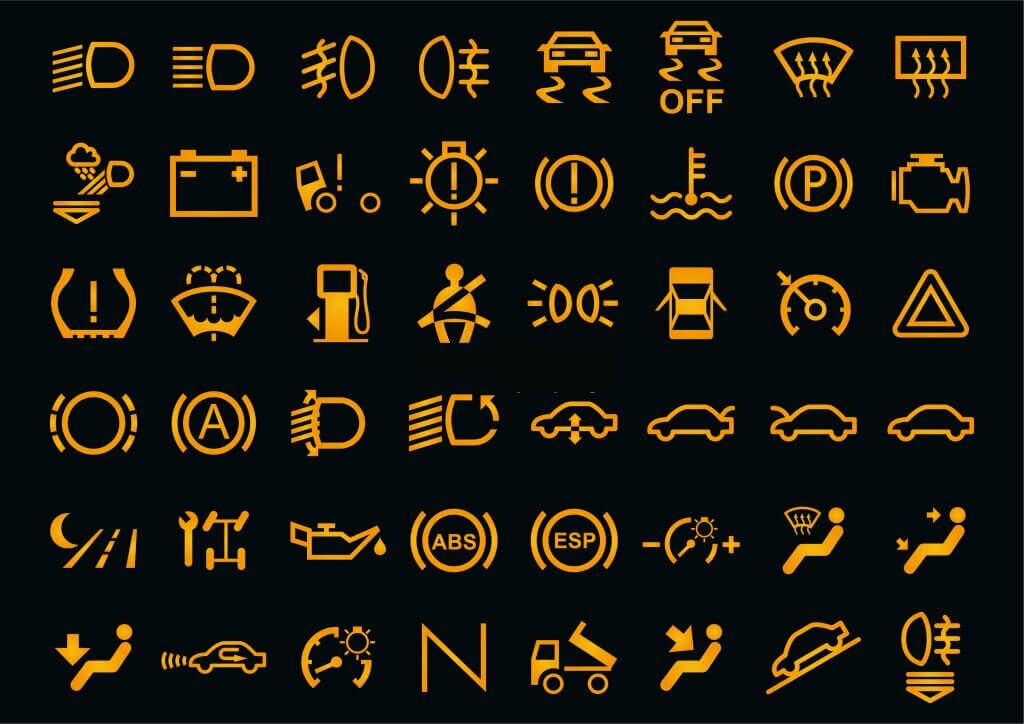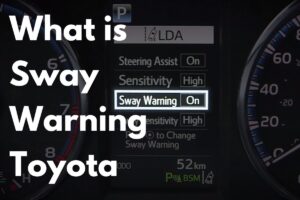I’ve been driving for years, but it wasn’t until recently that I truly became aware of the check gauge light on my dashboard. I had no idea what it meant or how to address any issues it might indicate.
After doing some research, I’m now much more knowledgeable about the check gauge light and how to fix any triggers. In this article, I’ll be unveiling the meaning and triggers of the check gauge light, as well as providing tips on how to fix any triggers and prevent check gauge light issues.
Check Gauge Light – Key Takeaways
– The check gauge light indicates abnormal gauge readings in the vehicle and is triggered by the Powertrain Control Module (PCM) when there may be a problem with the vehicle’s systems.
– Triggers for the check gauge light include low oil pressure, engine overheating, loose gas cap, bad sensors or sending unit, problems with the thermostat, bad water pump, blown fuses, leaky vacuum, and loose accessory belt.
– To fix the triggers of the check gauge light, actions such as replacing faulty parts, getting an oil change, tightening the gas cap, replacing sensors or sending units, replacing the thermostat or water pump, and replacing blown fuses may be necessary.
– Issues with the PCM/ECM/ECU can cause false warnings and may require recalibration or replacement of the diagnostic tool. Charging system issues can also be indicated by the check gauge light and may be resolved by addressing battery-related problems. Lack of proper maintenance can lead to check gauge light issues and irreversible damage, so following the appropriate maintenance schedule is crucial.
Meaning and Triggers of the Check Gauge Light

Frequently, the check gauge light is triggered when the Powertrain Control Module (PCM) detects abnormal readings in the vehicle’s gauges. This can include:
– Low oil pressure
– Engine overheating
– Loose gas cap
– Bad sensors or sending unit
– Problems with the thermostat
– Bad water pump
– Blown fuses
– Leaky vacuum
– Loose accessory belt
Knowing the triggers and how to fix them can be helpful in interpreting the check gauge light.
Common misconceptions include thinking that the check gauge light is triggered when the battery is low, or that it’s always a sign of a serious issue. While the check gauge light can indicate serious issues, it can also be triggered by something as simple as a loose gas cap.
Understanding tips for interpreting the check gauge light and dispelling common misconceptions can help drivers make informed decisions when they see the warning light.
How to Fix Triggers of the Check Gauge Light
I’m going to discuss how to fix the triggers of the check gauge light. Low oil pressure can be remedied by replacing the faulty part or getting an oil change. If the engine is overheating, immediate action is necessary, followed by adding coolant or seeking professional help. A loose gas cap can be tightened or replaced. Bad sensors or sending units should be identified and replaced. Replacing the damaged thermostat and adding coolant can help with thermostat issues. Replacing the faulty water or accessory belt can solve the problem. Causes of false warnings include a defective diagnostic tool, problems with the PCM/ECM/ECU, clogged battery terminals, and a lack of maintenance. Possible consequences of ignoring the check gauge light include irreversible damage or costly repairs.
Issues with PCM/ECM/ECU
Investigating PCM/ECM/ECU issues can help identify the cause of a check gauge light. A diagnostic tool malfunction or false warnings can be the root of the problem. It’s possible that the PCM or other onboard diagnostics tool can send false warnings, so recalibrating or replacing the tool may be necessary. If the problem is a defective diagnostic tool, then it should be identified and replaced.
It’s important to investigate the vehicle to ensure there are no other issues. If the problem isn’t a false warning, then other charging system or maintenance-related problems may be present. Clogged or dirty battery terminals, shorted-out wiring, or lack of regular servicing can all lead to check gauge light issues. Proper maintenance can prevent these issues, and addressing battery-related problems can help with charging system problems.
Charging System Issues
When it comes to charging system issues, the check gauge light may indicate problems. These can be caused by clogged or dirty battery terminals, which can lead to extra strain and drain on the battery. To address these issues, it’s recommended to use a voltmeter or get a battery test to check the alternator.
If the alternator isn’t working properly, it could be due to battery-related problems. In such cases, cleaning and tightening the terminals or replacing the battery may be necessary. Additionally, shorted-out wiring can cause similar problems, and an inspection of the wiring can help identify any potential issues.
It’s important to note that proper maintenance can help prevent check gauge light issues, so it’s essential to follow the appropriate maintenance schedule.
Lack of Proper Maintenance
Without proper maintenance, the check gauge light can be triggered by wear, clogs, and damage to vehicle systems. Neglecting regular servicing and maintenance can lead to costly repairs, as serious issues can arise that may be irreversible.
Preventive maintenance is the key to avoiding check gauge light problems, as it can help to prevent:
1. Wear and tear of vehicle systems
2. Corrosion and clogs
3. Accumulation of dirt and debris
The consequences of neglecting regular maintenance can be devastating, as the check gauge light could indicate irreversible damage due to lack of maintenance. Following the appropriate maintenance schedule is the best way to ensure your vehicle runs smoothly and efficiently, and to avoid costly repairs.
Tips for Preventing Check Gauge Light Warning
By taking proactive steps and regularly maintaining my vehicle, I can help to prevent check gauge light warnings. Common causes of check gauge light warning include low oil pressure, overheating, loose gas cap, and bad sensors or sending unit.
To diagnose a check gauge light warning, I can check the vehicle’s gauges and listen for any strange noises. Additionally, I should ensure that all the fluids are at the correct levels, my gas cap is securely in place, and my battery is properly charged. I should also inspect all the hoses and belts for signs of wear, and replace any that appear worn or damaged.
Regular oil changes and tune-ups can also prevent check gauge light warnings, as they can help identify potential issues before they become serious. By addressing these preventive measures, I can help ensure that my vehicle runs smoothly and efficiently.
Common Causes of Check Gauge Light Warning
Although many issues can lead to a check gauge light warning, some of the most common include low oil pressure, engine overheating, loose gas cap, and bad sensors or sending units. It’s important to know how to interpret these warnings so the necessary steps can be taken to prevent costly damage.
Common misconceptions about check gauge light warnings include PCM/ECM/ECU issues, charging system issues, and lack of proper maintenance.
To fix triggers of the check gauge light:
– Low oil pressure can be fixed by replacing the faulty part or getting an oil change.
– For engine overheating, add coolant and seek professional help.
– Loose gas cap can be solved by tightening or replacing it.
Knowledge of these common causes of check gauge light warnings can help drivers quickly identify and rectify potential problems with their vehicles.
Ways to Diagnose a Check Gauge Light Warning

Interestingly, diagnosing a check gauge light warning requires careful attention and consideration.
Diagnostic tools are essential for identifying the cause of the issue, and professional help should be sought when the issue appears to be serious. PCM and other onboard diagnostics tools can send false warnings, and if that’s the case, the faulty tool needs to be recalibrated or replaced.
Charging system issues can also be indicated by the warning light, and a voltmeter or a battery test can be used to check the alternator.
Finally, lack of proper maintenance can lead to check gauge light issues, so it’s important to follow the recommended maintenance schedule for the vehicle.
Frequently Asked Questions
What Are the Most Common Issues That Can Trigger the Check Gauge Light?
The most common causes of a check gauge light are low oil pressure, an overheating engine, a faulty alternator, and a loose gas cap.
How Can I Tell if My Vehicle’s Charging System Is Working Properly?
I can check if my vehicle’s charging system is working properly by using a voltmeter or getting a battery test to assess the alternator and if there are any battery issues.
What Are the Best Ways to Diagnose a Check Gauge Light Warning?
To diagnose a check gauge light warning, I’d suggest checking battery levels, inspecting the alternator, and testing the voltage regulator. These steps can help identify any underlying issues and help you get your vehicle back on the road.
Are There Any Non-Mechanical Causes of Check Gauge Light Warnings?
Yes. Non-mechanical causes of check gauge light warnings can include low voltage battery or electric problems. Such issues can be caused by clogged or dirty battery terminals, shorted-out wiring, or lack of proper maintenance.
How Often Should I Get My Vehicle Serviced to Help Prevent Check Gauge Light Issues?
I should get my vehicle serviced regularly for preventive maintenance to prevent check gauge light issues. Battery testing should also be done to ensure that the charging system is functioning properly.
Conclusion
By understanding the meaning and triggers of the check gauge light, you can take the necessary steps to fix any issues and prevent any further warnings.
From PCM and ECM issues, to charging system issues and lack of proper maintenance, the check gauge light can be a warning sign of a variety of issues.
With the right knowledge and understanding, you can ensure your vehicle is running safely and efficiently.




